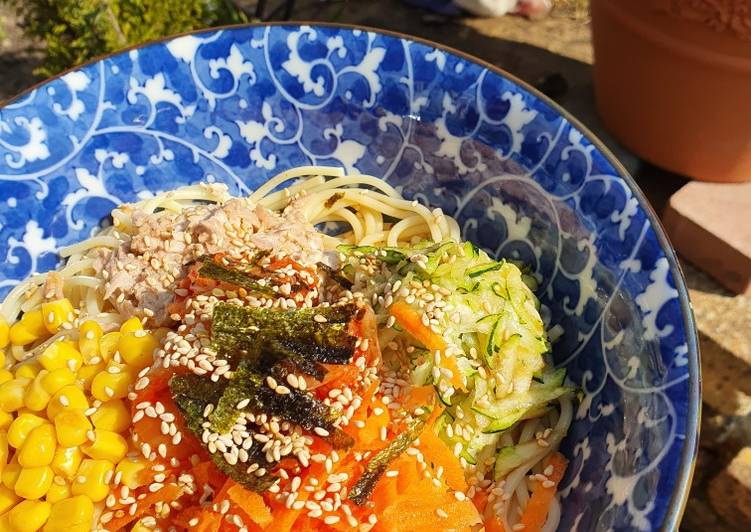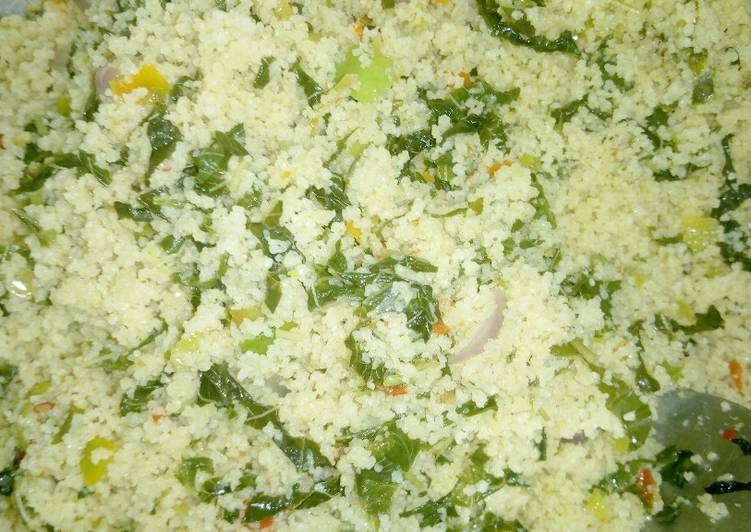
Hello everybody, it’s me again, Dan, welcome to my recipe site. Today, we’re going to make a distinctive dish, japanese reimen (chilled noodles). One of my favorites. For mine, I am going to make it a little bit tasty. This will be really delicious.
Hiyashi chūka (冷やし中華, literally "chilled Chinese") is a Chinese noodle style Japanese dish consisting of chilled ramen noodles with various toppings served in the summer. It is also called reimen (冷麺, literally "chilled noodle") in Kansai region and hiyashi rāmen. Tags: Reimen Chilled Noodles Iwate Cuisine Japanese Food.
Japanese Reimen (chilled noodles) is one of the most favored of current trending foods on earth. It is easy, it is fast, it tastes delicious. It’s appreciated by millions every day. Japanese Reimen (chilled noodles) is something that I’ve loved my entire life. They are fine and they look wonderful.
To begin with this recipe, we must first prepare a few ingredients. You can have japanese reimen (chilled noodles) using 17 ingredients and 5 steps. Here is how you can achieve it.
The ingredients needed to make Japanese Reimen (chilled noodles):
- Get 400 g spaghetti or noodles
- Prepare Tare (sauce)
- Take 6 tbsp rice wine vinegar
- Get 5 tbsp soy sauce
- Prepare 2 tbsp soft brown sugar
- Prepare 1 tbsp sesame oil
- Make ready Toppings (feel free to experiment - it should be colourful)
- Prepare Cucumber (grated or thinly sliced into matchsticks)
- Make ready Ham (sliced thinly)
- Take Egg crepe omelette (thinly sliced)
- Make ready Beansprouts
- Get Crab sticks (torn into strips)
- Take Sweetcorn
- Take Grated carrot
- Take Sriracha tuna mayo
- Get Sesame seeds
- Take Nori seaweed (torn or cut into strips with scissors)
Called men (麺) in Japanese, noodles are a staple in Japanese cuisine. The white, wheat-based noodles are often enjoyed chilled and dipped in sauce, or served in a The noodles are more similar to ramen noodles, and is usually prepared with small pieces of. Hiyashi Chuka (Japanese Chilled Ramen Noodles). Hiyashi chuka (冷やし中華) is a Japanese chilled ramen dish with vibrantly colourful toppings and served with a cold sesame-vinegar-soy dressing.
Instructions to make Japanese Reimen (chilled noodles):
- Boil the noodles or spaghetti according to instructions. Once it is cooked, drain the noodles and run under cold water until the noodles are cold throughout.
- Prepare your toppings. There are some suggestions in the ingredients list above but feel free to experiment. The bowl should look colourful so try using vegetables of different colours.
- Prepare the tare (sauce). Mix all the sauce ingredients in a jug and mix well until all the sugar is dissolved.
- Split the noodles/spaghetti into four large bowls. Place the toppings over the noodles in sections. Pour the sauce over the top and sprinkle sesame seeds and nori.
- Serve with chopsticks. Mix the ingredients in the bowl together to enjoy!
Hiyashi chuka is Japanese cold ramen noodle mixed with homemade dressing and Hiyachi Chuka literally means "chilled Chinese"; however, it is a Japanese dish with On hot days, a cold noodle dish like Hiyashi Chuka is a delicious nutritious meal to cool your. Japanese ramen noodle soup consists of a huge bowl filled with a broth (which is typically seasoned with salt, soy sauce, ramen, and/or tonkotsu pork bone stock) and ramen noodles, then topped with assorted meat, protein, and vegetable garnishes. Easy Japanese Ramen Noodles recipe uses store bought soup and noodles, but the toppings are homemade. One of my favorite chilled meals: hiyashi chuka, chilled ramen topped all sorts of goodies and tossed in a bright, simple dressing. Top the noodle with shrimp, corn, scallion, ham, tomato, crab stick, and sliced egg.
So that is going to wrap this up with this special food japanese reimen (chilled noodles) recipe. Thank you very much for your time. I am sure that you will make this at home. There’s gonna be interesting food in home recipes coming up. Don’t forget to save this page on your browser, and share it to your family, colleague and friends. Thanks again for reading. Go on get cooking!


